| Blue Copper Lycaena heteronea heteronea Immatures |
| Home - Butterflies - Details |
| Female Female Eclosure Male Male Eclosure Specimen |
Oviposited on July 17, 2007
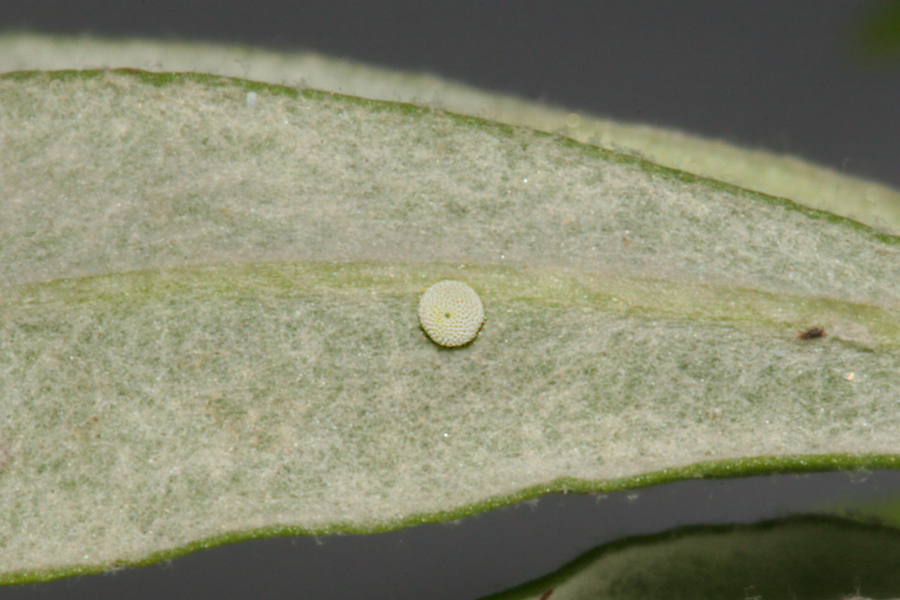
First Instar - Hatched and photographed 8 May 2009
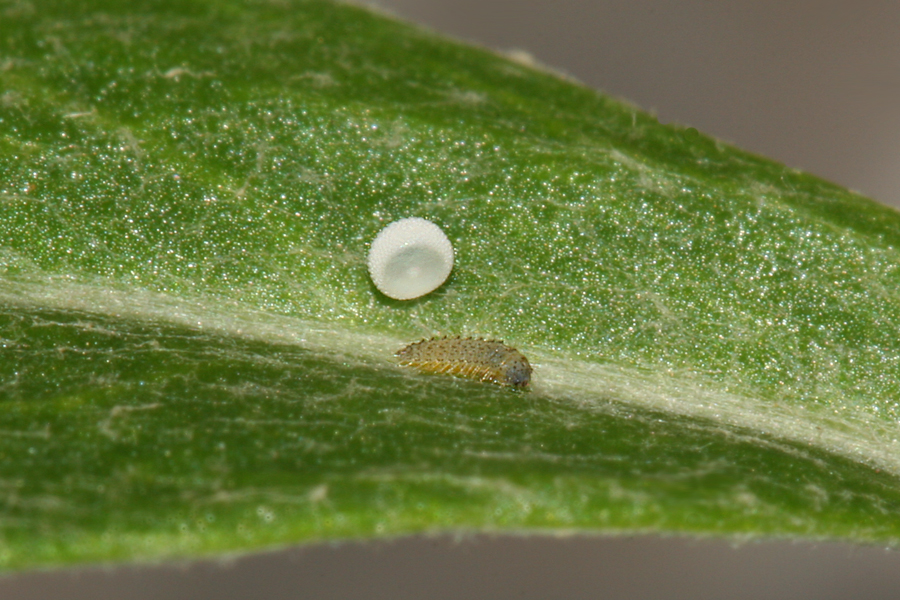
Second Instar on 12 May 2009
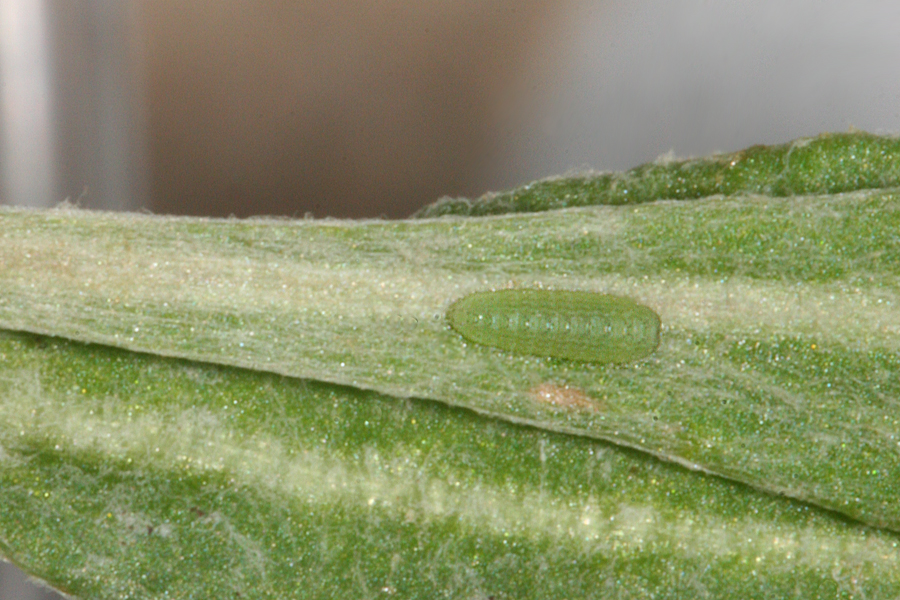
Second Instar on 12 May 2009
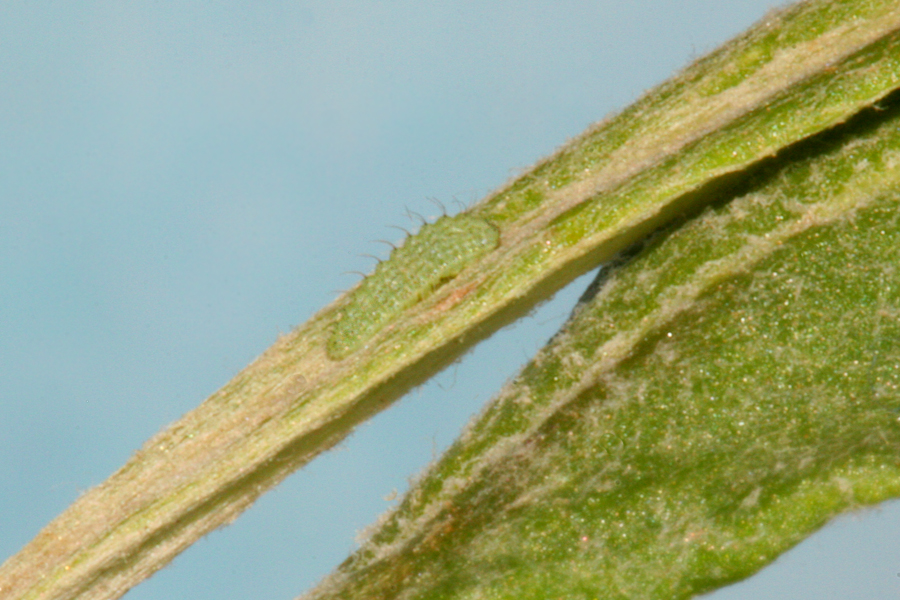
#1 Third Instar on 16 May 2009 - Note the eating pattern of this third instar
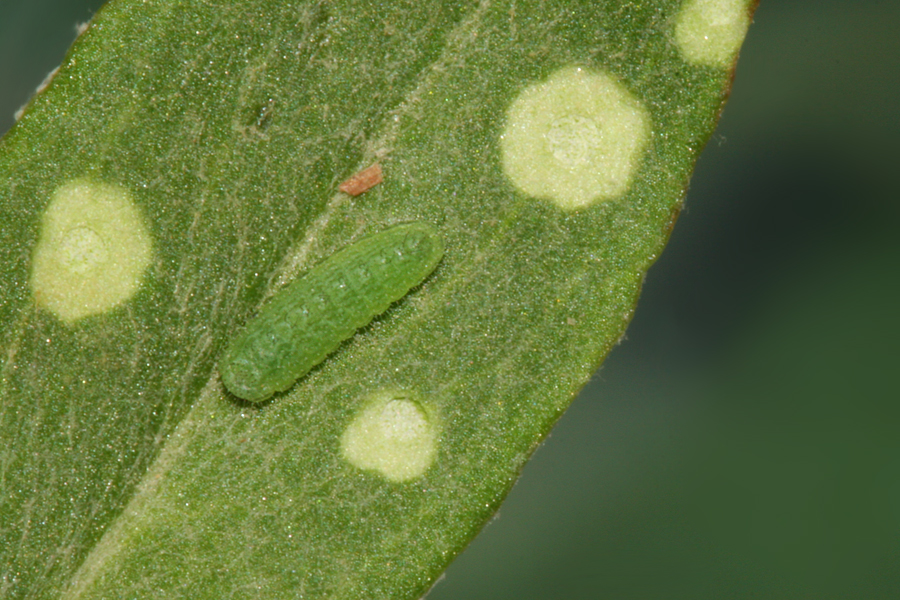
#1 Third Instar on 16 May 2009
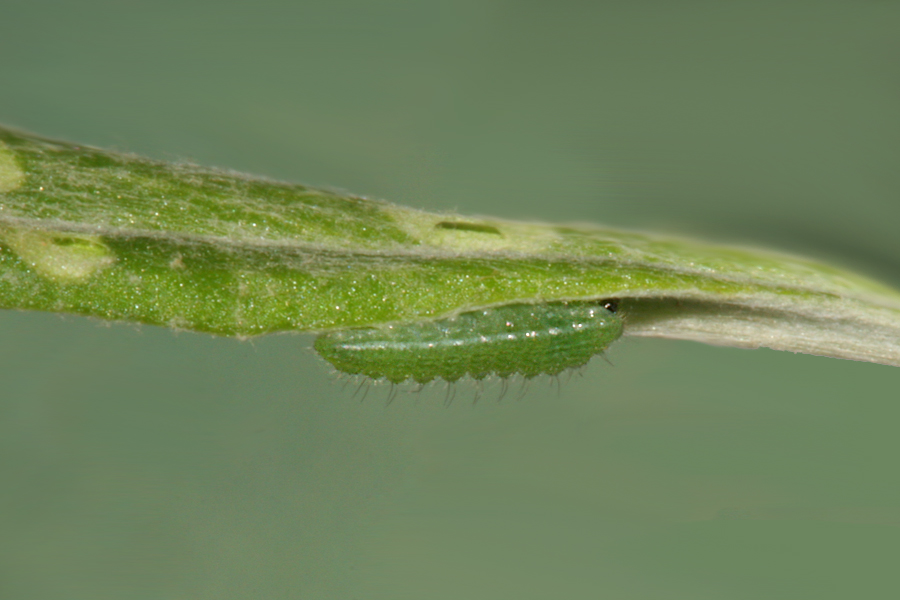
#11 Third Instar on 18 May 2009
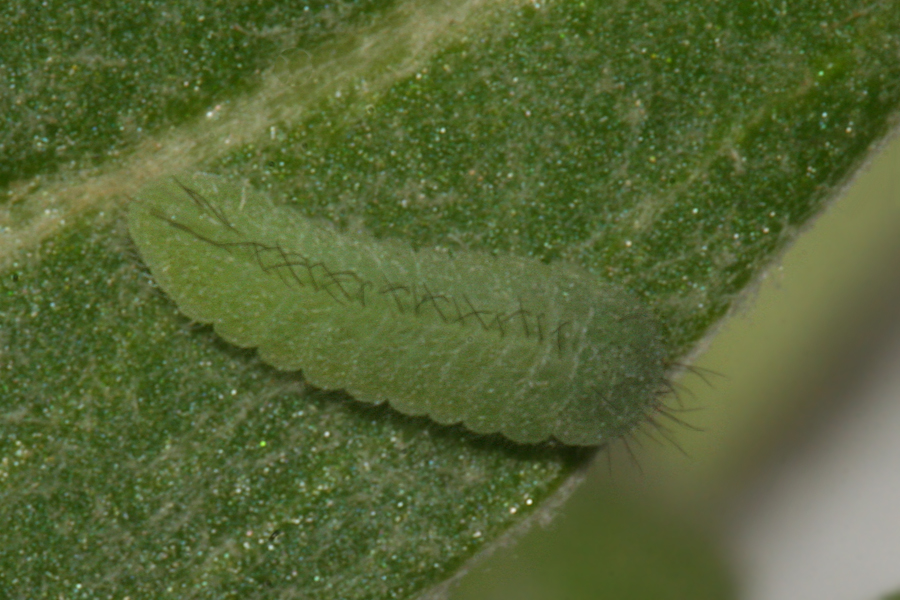
#2 Fourth Instar on 21 May 2009
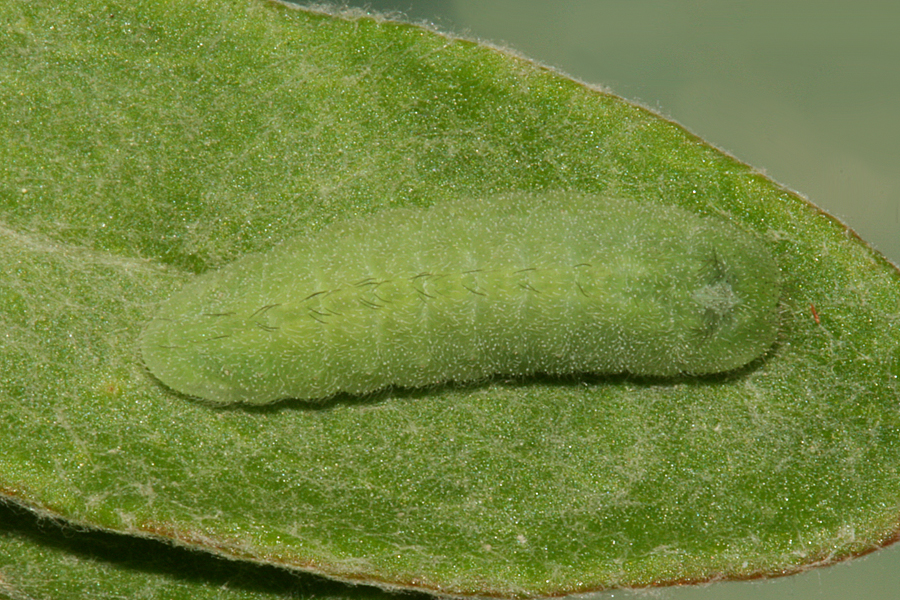
#1 Fourth Instar on 26 May 2009
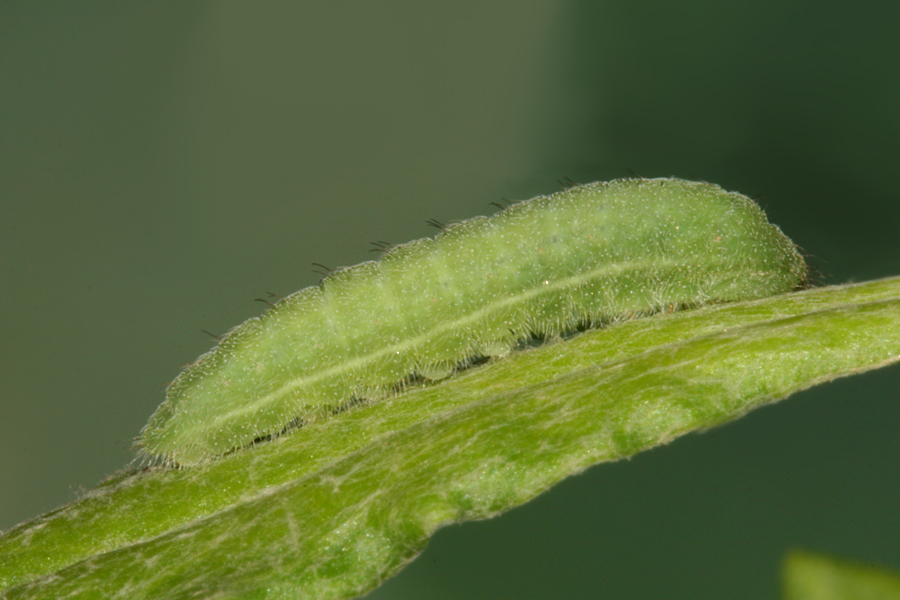
#1 Fourth Instar on 26 May 2009
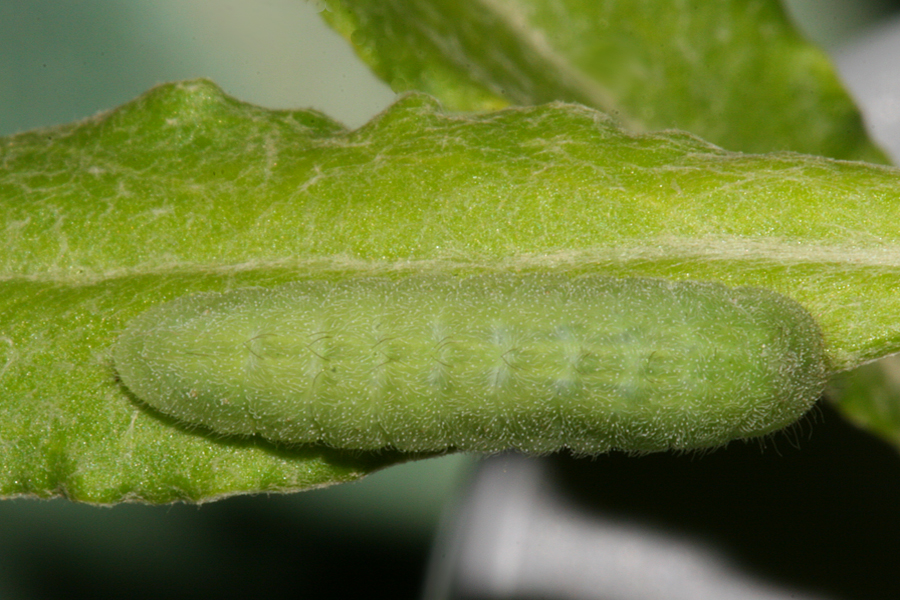
#2 Fourth instar head -on 23 May 2009
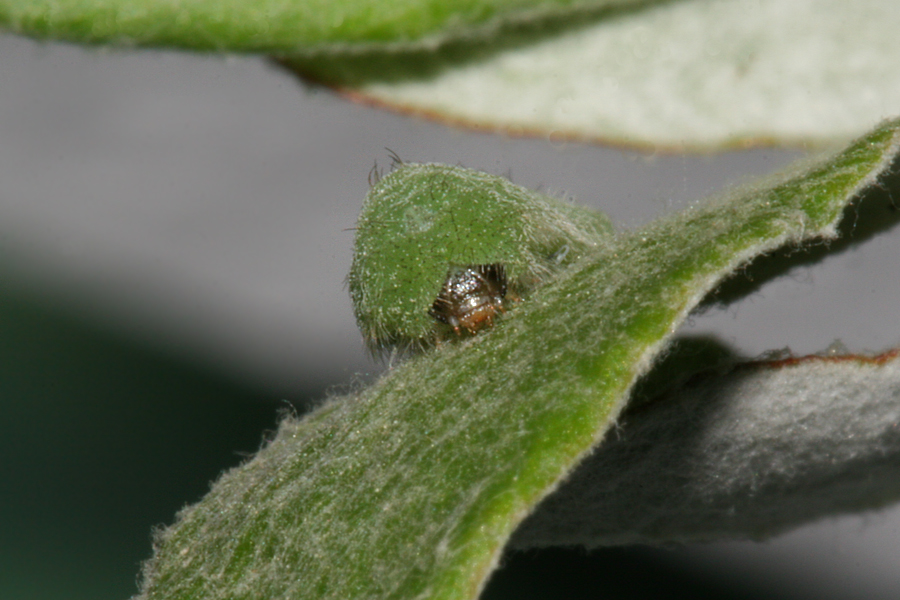
#2 Fourth Instar Thoracic Shield on 23 May 2009
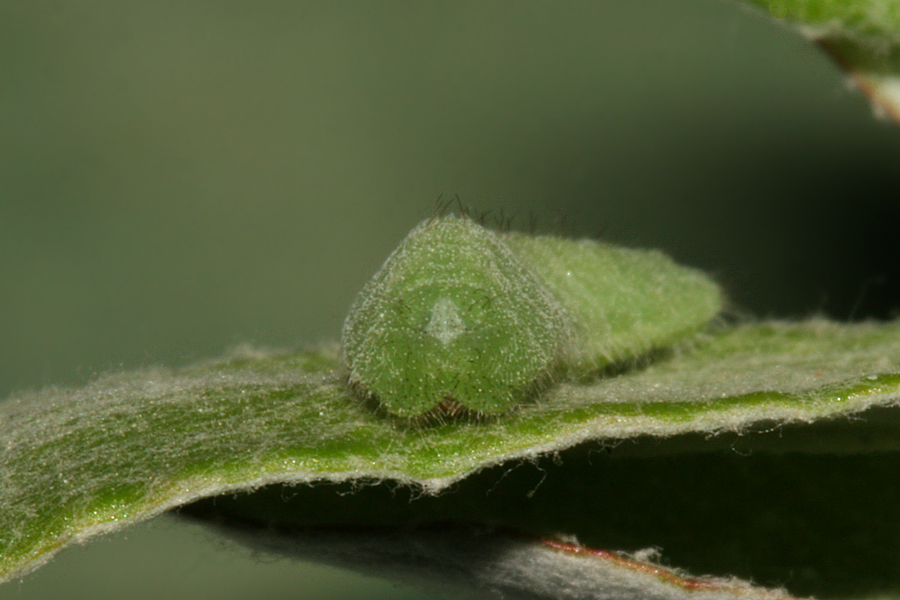
Pre-Pupa #8 on 28 May 2009
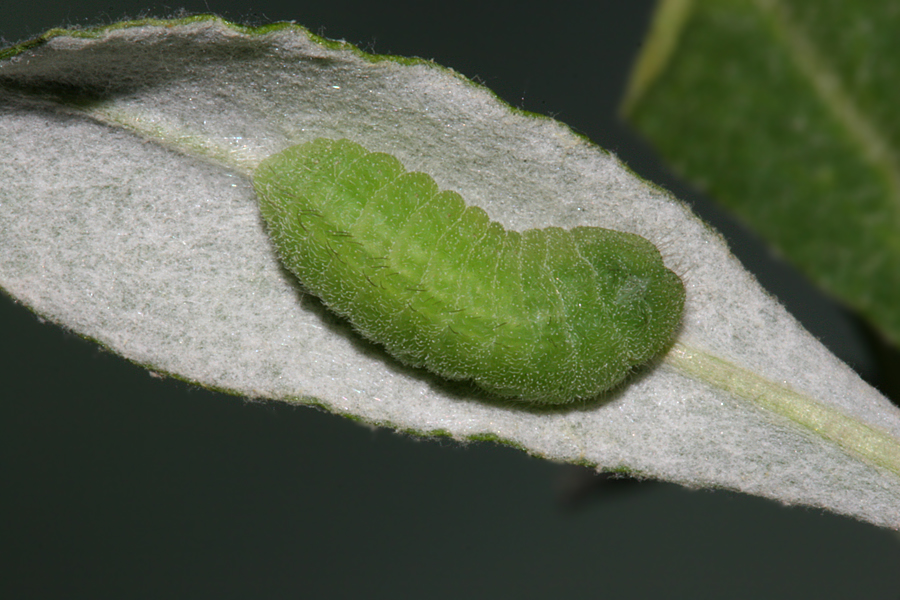
Pupae
#8
Pupa formed 30 May 2009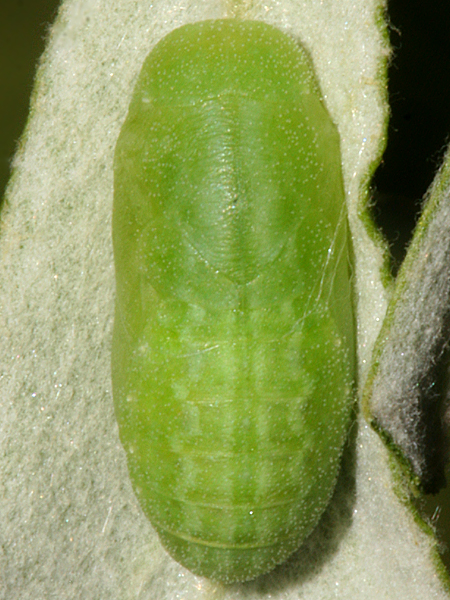 |
|
#3 Male Pupa formed 1:05 P.M. 30 May 2009 Photo showing development on 7 June 2009 |
|
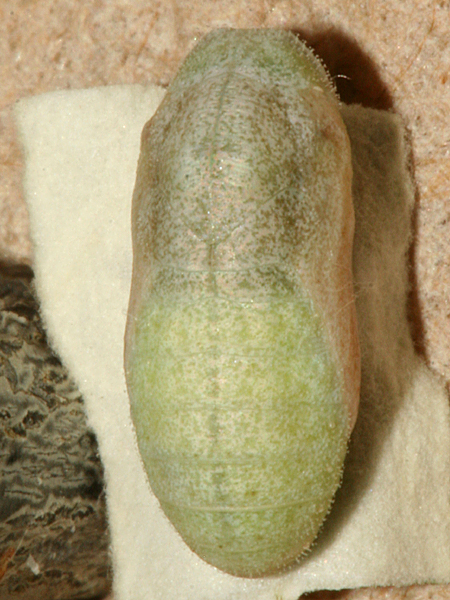 |
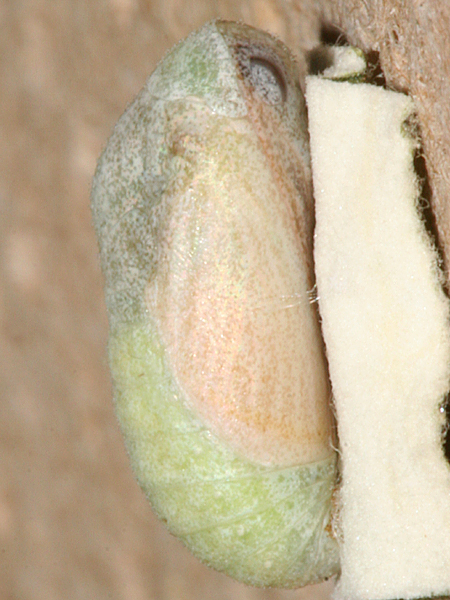 |
#3 Male Pupa formed 1:05 P.M. 30 May 2009 Photo showing development 7:13 A.M. 8 June 2009 |
|
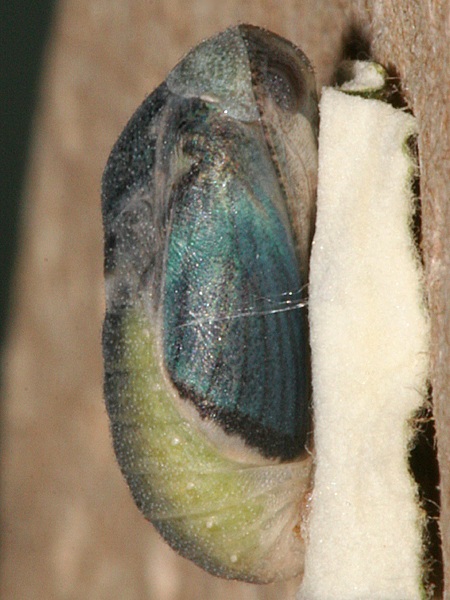 |
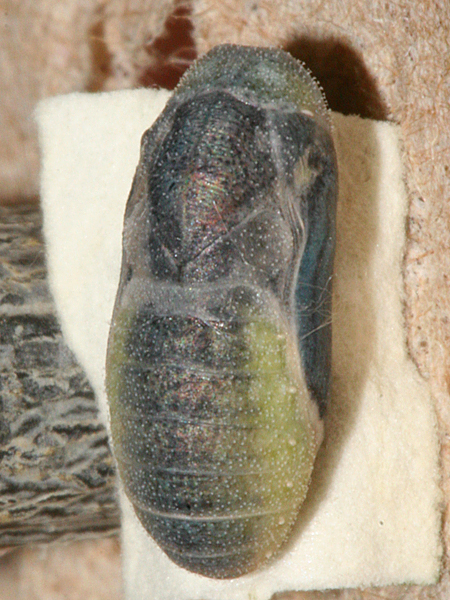 |
#3 Male Pupa formed 1:05 P.M. 30 May 2009 Photo showing development 2:41 P.M. 8 June 2009 Five minutes before butterfly emerged |
|
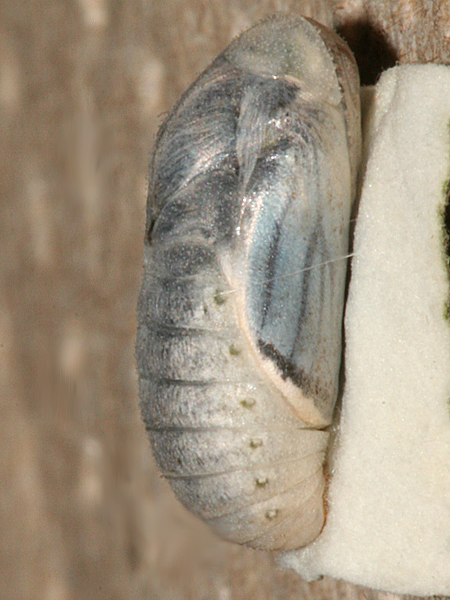 |
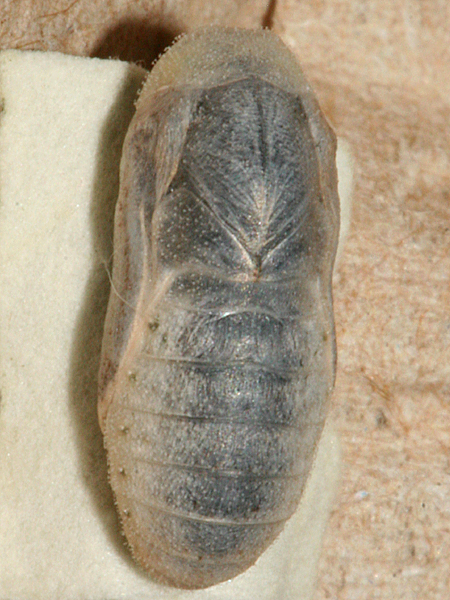 |
#10 Female Pupa formed 6:30 P.M. 31 May 2009 - 3/8 Inch long Photo showing development on 9 June 2009 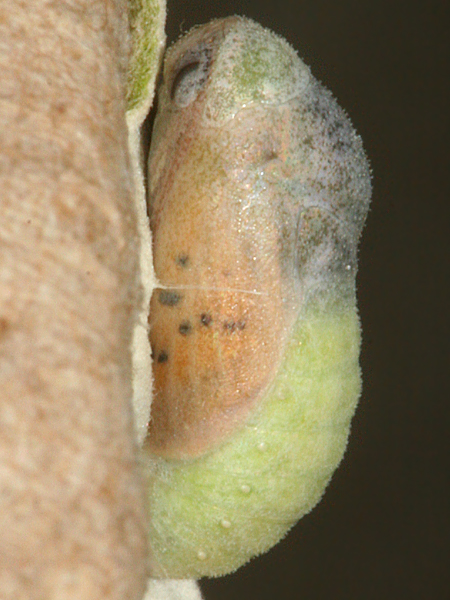 |
|
#10 Female Pupa formed 6:30 P.M. 31 May 2009 Photo showing development 8:05 A.M. 10 June 2009 |
|
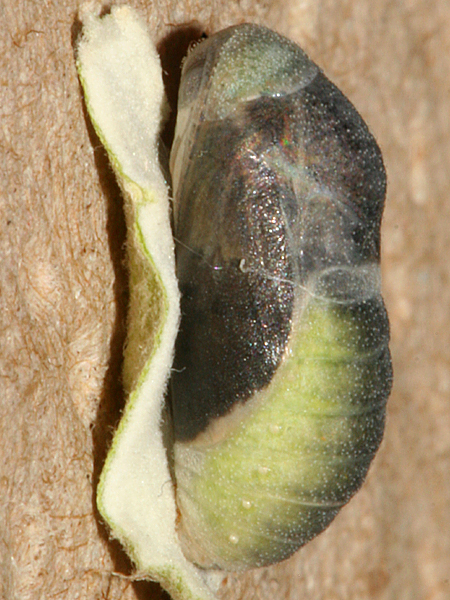 |
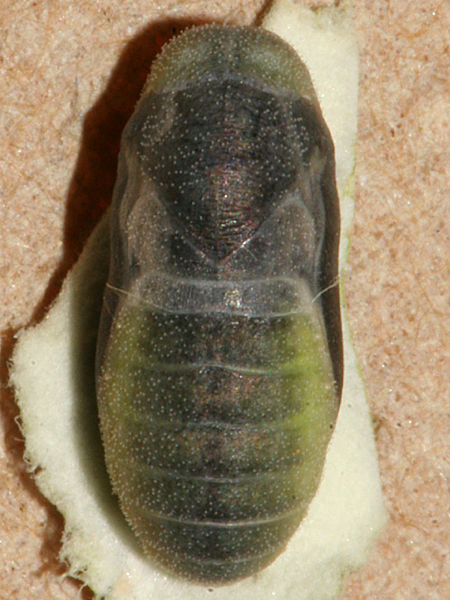 |
#10 Female Pupa formed 6:30 P.M. 31 May 2009 Photo showing development 11:02 P.M. 10 June 2009 Twelve minutes before female emerged |
|
 |
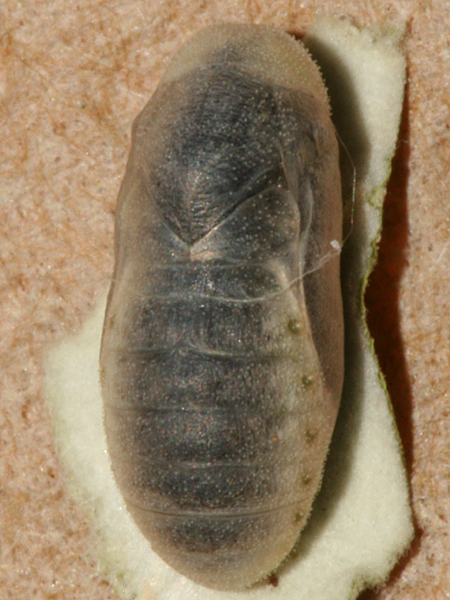 |
|
Photo
Details -
©Nicky Davis Female located July 16, 2007. Guardsman Pass, Salt Lake County, Utah. Ova laid July 17, 2007. After a few days these were put into the refrigerator to hibernate. They were kept fresh by keeping them taped to the side of a clay pot with a sauce cup full of water in the bottom. The clay pot was then placed in a plastic bowl with a lid on but opened at one side for circulation. They were checked every other week in attempt to keep them hydrated but not so damp that they would mold. However, this method did not work and none of the ova eclosed. In the summer of 2008, I located another female and again over wintered the ova. This time I put them into a chiffon hammock hanging inside a solo cup pierced with a needle on every surface. The solo cup was then put inside another plastic container that had other hibernating insects in it. It had two holes in it to provide some ventilation and two open solo cups full of water for hydration. The temperature was gradually brought down to freezing. This method worked and most of the ova hatched. Eggs were removed from hibernation 6 May 2009 and when they hatched, 8 May 2009, they were placed on Eriogonum heracleoides. They did well on this plant and went on through to pupa, then butterflies. Life History Eggs: overwinter as eggs Larva: 22-24 days ( 4 days as first instar, 4 days as second instar, 3-5 days as third instar, 6-9 days as fourth instar) Pupa: 9-10 days Host Plant
 |